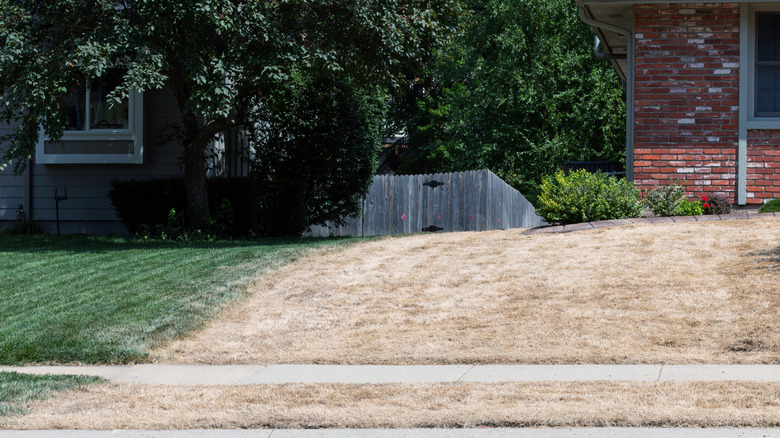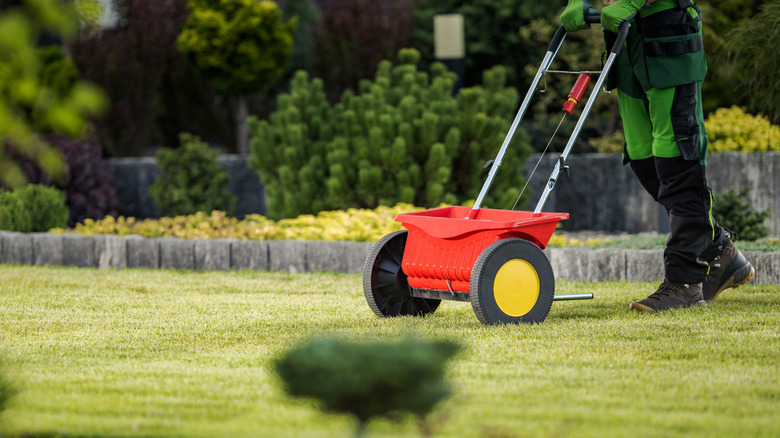How To Change Your Grass Without Removing It
A splotchy, discolored-looking lawn can be a real drag on your home's curb appeal. This lack of luster may have you wondering if there's a way to change your grass type without the massive task of completely removing what's already in your yard. The good news: there is. Overseeding — the process of adding new grass seed to an existing lawn — can enhance your yard's appearance while gradually transitioning it to a new grass type.
Overseeding is a practical chore that many homeowners perform yearly to keep their lawns looking green and lush. Some add the same seed type to maintain uniformity, while others choose different varieties to improve durability or transition to a whole new grass type. Since not all grasses have the same pros and cons, combining grass types ensures better durability, and if you want to switch your lawn entirely, it offers an easy, gradual way to do so. Using the best lawn seeding techniques to make the switch can boost your yard's appearance and may save you a significant amount of time and money compared to tearing up the yard and starting from scratch.
How to give your yard a makeover with overseeding
Patchy grass or a lawn that's overrun with weeds may be a sign that you don't have the right grass type for your region. Traditionally, switching to a new grass variety meant removing the existing lawn and reseeding over bare soil. This is a pretty big undertaking, and it may not be necessary if you're willing to gradually change your grass type, seeing improved results year over year.
Adding new seed to your lawn lets you skip the backbreaking work of removing your old grass. However, it's critical to choose the best grass type for overseeding before you start. You'll want to find a variety that's suited to your climate and your yard's light conditions — for instance, some grass types prefer shade while others thrive in sun. Once you've picked out a grass seed, ensure you perform this task at the best time of year to reseed your lawn. For northern areas with cool-season grass, this is generally in early fall, while for southern regions with warm-season grass, the best time is typically late spring to mid-summer.
Rather than tear up your yard or kill your existing grass, you can spread the new seed over your existing lawn with a broadcast spreader. With proper care, the seed should take root in bare patches, making your lawn thicker and improving its appearance and durability. Repeat this step the following year to slowly transition your grass to a new, improved variety.

